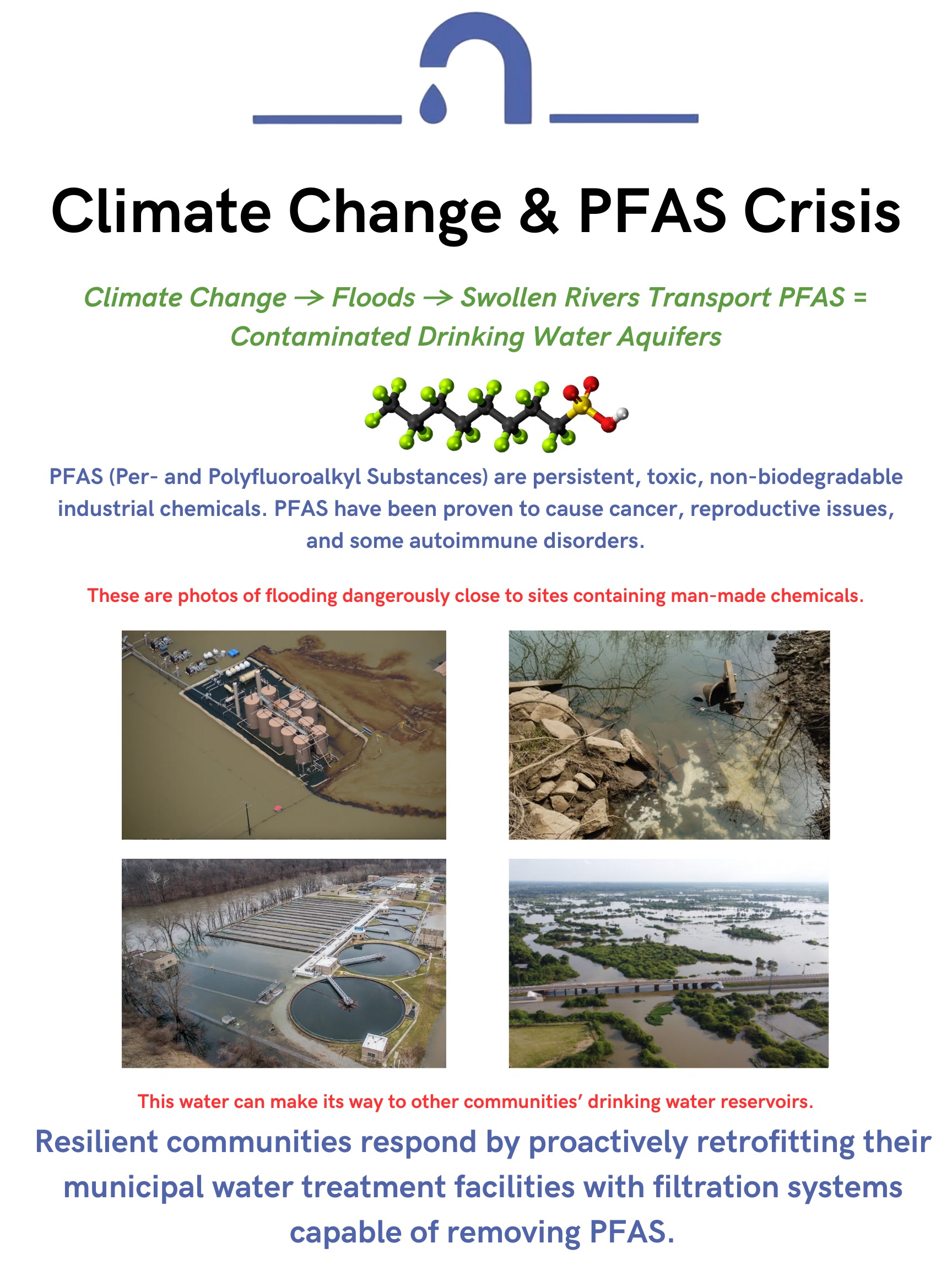Climate change worsens the PFAS (forever chemicals) crisis. In the event of a flood, water may come into contact with sites contaminated with PFAS and be transported. After heavy rains, PFAS are carried by swollen rivers and tributaries toward other communities’ drinking water reservoirs or leach into the ground towards aquifers.
My village’s aquifer currently contains unsafe levels of PFAS and our municipal water treatment facility doesn’t use any sort of filtration system to remove toxins. Last summer, I toured a neighboring community’s water treatment facility and witnessed how they use a granular activated carbon (GAC) filtration system to successfully reduce PFAS levels in their water. I proposed to my village council that we need to retrofit our water treatment facility with a GAC filtration system in order to protect our citizens from the carcinogenic effects of PFAS. Other geographical areas are also at risk. In coastal areas, hurricanes can similarly spread PFAS. In drought prone areas, fire-fighting foam containing large amounts of PFAS are used to extinguish forest fires. PFAS are becoming increasingly more ubiquitous. To be more resilient, it is critical that municipal water treatment facilities are retrofitted with a filtration systems capable of removing PFAS.
Contact us
Thank you for your interest in contacting Future Engineers. We look forward to connecting with you!
General Inquiries
support@futureengineers.orgSponsorship Inquiries
sponsor@futureengineers.org
